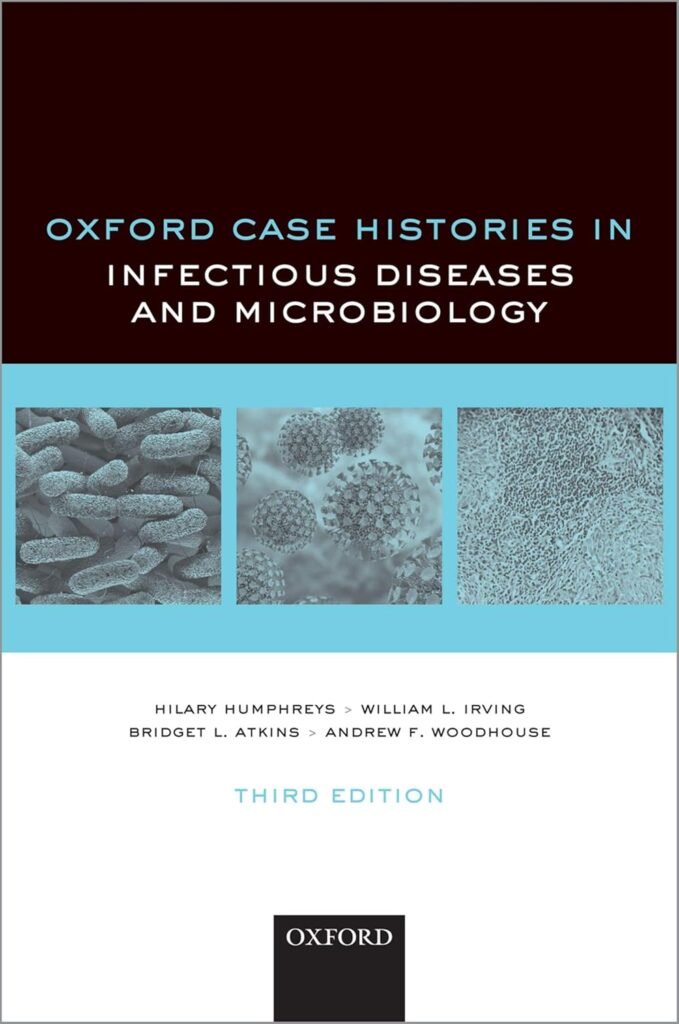Disclaimer: This post is for academic purposes only. Please read the original document if you intend to use them for clinical purposes.
This document summarizes the key recommendations and information published in 2022 in Indian Council of Medical Research (ICMR)’s guidance on the diagnosis and management of carbapenem-resistant Gram-negative infections. It highlights the growing threat of these infections, outlines diagnostic approaches (both conventional and rapid molecular methods), details treatment strategies based on resistance mechanisms, and emphasizes the importance of infection control and antimicrobial stewardship. The guidance aims to equip healthcare professionals in India with the necessary knowledge for effective management of Carbapenem Resistant Enterobacterales (CRE), Carbapenem Resistant Pseudomonas aeruginosa (CRPA), and Carbapenem Resistant Acinetobacter baumannii (CRAB).
Main Themes and Important Ideas/Facts:
1. The Growing Threat of Carbapenem Resistance:
- Carbapenem resistance in Gram-negative pathogens, including Enterobacterales, P. aeruginosa, and A. baumannii, is a significant and increasing cause of nosocomial infections in India.
- Resistance to carbapenems (ertapenem, meropenem, or imipenem) defines CRE, CRPA, and CRAB.
- These infections are associated with higher mortality rates due to delays in effective treatment and limited treatment options.
- ICMR AMR surveillance data indicates high levels of imipenem resistance: 28% in E. coli, 55% in K. pneumoniae, and 80% in A. baumannii isolates.
- Hypervirulent carbapenem-resistant K. pneumoniae strains pose an additional threat with potential for global spread.
2. Mechanisms of Carbapenem Resistance:
- Resistance primarily occurs through plasmid-mediated carbapenemases (enzymes that break down carbapenems) or chromosomal mechanisms (efflux pumps and porin loss).
- Carbapenemase production is the most common mechanism in Enterobacterales.
- Carbapenemases are classified into molecular classes A, B, and D (Ambler classification), with examples like KPC and IMI (Class A), NDM, VIM, and IMP (Class B), and OXA types (Class D).
- Non-fermenters like P. aeruginosa and A. baumannii also exhibit resistance through plasmid-mediated carbapenemases (e.g., OXA-23/24-like, NDM), chromosomal mechanisms (outer membrane impermeability/porin loss), or reduced affinity for penicillin-binding proteins.
- Different carbapenemase genes confer varying resistance patterns and susceptibility to beta-lactamase inhibitors.
3. Diagnosis of Carbapenem Resistance:
- Conventional antimicrobial susceptibility testing (culture-based) has a long turnaround time (2-5 days).
- Rapid molecular methods for carbapenemase detection have a turnaround time of less than 2 hours, potentially reducing hospitalization and costs.
- Phenotypic susceptibility to carbapenems remains the “gold standard” as non-susceptibility can arise from various mechanisms.
- Biochemical assays (Carba NP®, Blue Carba®, Carba® tests) can detect carbapenemase production but may miss other resistance mechanisms and cannot identify the specific enzyme type.
- Molecular techniques (conventional and real-time PCR) are commonly used for rapid identification of carbapenemase-encoding genes (e.g., KPC, IMP, VIM, NDM, OXA-48-like) with turnaround times under 24 hours.
- Most of the commercially available rapid molecular tests can detect the most common five carbapenemases (KPC, IMP, VIM, NDM and OXA-48 like variants) with the short turn-around time of less than 24hrs and with a sensitivity of 80-100%.
- Microarrays and Whole Genome Sequencing (WGS) offer higher sensitivity for detecting multiple resistance genes and provide insights into both acquired and chromosomal resistance mechanisms, significantly impacting surveillance and patient care.
- Rapid gene-based assays on direct specimens can expedite targeted therapy initiation.
- Limitations of rapid molecular tests include targeting only the most common carbapenemase genes, meaning a negative result doesn’t rule out resistance due to other mechanisms. Gene presence doesn’t always correlate with resistance expression. Phenotypic tests cannot differentiate carbapenemase types.
- Most clinical labs rely on phenotypic tests (mCIM, eCIM, CarbaNP®) or molecular tests for common carbapenemase genes for routine diagnosis. Phenotypic tests have limitations. Commercial molecular assays offer faster detection but cannot identify all resistance mechanisms. Antibiotic susceptibility testing remains essential for guiding therapy.
4. Susceptibility Testing of Aztreonam with Ceftazidime-Avibactam:
- Aztreonam is stable against metallo-beta-lactamases (MBLs) like NDM, IMP, and VIM, making it useful for MBL-producing organisms, despite being susceptible to ESBLs and Class C enzymes.
- Avibactam inhibits Class A (including KPC and ESBLs), Class C, and some Class D (e.g., OXA-48-like) beta-lactamases.
- The combination of Aztreonam with Ceftazidime/Avibactam is a viable treatment option for “MBL-infections” in Enterobacterales. Ceftazidime itself is ineffective against MBLs. This combination’s utility is limited to MBL-expressing Enterobacterales; Avibactam does not restore Aztreonam activity against MBL-expressing P. aeruginosa and Acinetobacter spp. due to efflux resistance.
- Standardized susceptibility testing methods for ATM-CZA are still evolving. Broth microdilution (BMD) to determine Aztreonam MIC in the presence of fixed avibactam is a reliable method in experienced labs. CLSI aztreonam breakpoints should be used for interpretation. Synergy (significant MIC reduction) doesn’t always equate to susceptibility based on CLSI breakpoints.
- Gradient strip stacking and crossing methods, as well as a modified E-test/disc diffusion method, are described for assessing susceptibility to this combination. These methods, particularly the modified E-test/disc diffusion, require validation.
5. Recommendations for Management of Carbapenem Resistant Gram-Negative Infections:
- New beta-lactamase inhibitor combinations appear safer and more effective for CRE than older agents like polymyxins.
- Empiric Therapy: Should be guided by previous organisms identified in the patient, recent antimicrobial exposure, and local antibiograms. Distinction between colonization and true infection is crucial for hospital-acquired Acinetobacter and S. maltophila.
- Directed Therapy: Carbapenem Resistant Enterobacterales (CRE – K. pneumoniae, E. coli):
- If carbapenemase testing available: Treatment options are stratified based on the specific carbapenemase identified (e.g., NDM, OXA-48, KPC). Prolonged infusion of Ceftazidime-Avibactam +/- Aztreonam is often the first choice for MBL producers.
- If carbapenemase testing unavailable: For severe infections, Polymyxins plus another susceptible agent (Tigecycline, Aminoglycosides, IV Fosfomycin) or high-dose Carbapenems (if MIC < 16) may be used. Ceftazidime-Avibactam alone (if susceptible) or with Aztreonam (if synergy shown) are options. Tigecycline has limitations (not for bloodstream infections or pneumonia alone). Polymyxins or aminoglycosides can be used as single agents for uncomplicated infections with source control.
- Carbapenem Resistant Non-Enterobacterales (CRAB, CRPA):
- Carbapenem Resistant Acinetobacter baumannii (CRAB): Options include high-dose Sulbactam (alone or with Ampicillin-sulbactam/Cefoperazone-Sulbactam if susceptible), Polymyxins (Colistin preferred for UTI), Minocycline, Tigecycline (not for UTI), and other susceptible agents. Combination therapy (including high-dose Sulbactam even if non-susceptible) is suggested for moderate to severe infections. Monotherapy with Sulbactam might be considered for mild infections. Nebulized antibiotics for respiratory CRAB are not recommended.
- Carbapenem Resistant Pseudomonas aeruginosa (CRPA): Use Beta-lactams/Beta-lactamase inhibitor combinations (if susceptible), Aminoglycosides (if susceptible), or Polymyxins (when other options unavailable). Combination therapy is suggested for severe infections with limited susceptible options (Polymyxins + another agent). Monotherapy can be considered for non-severe infections based on the infection source.
6. Prevention:
- Infection Control (Horizontal Interventions – all patients): Standard precautions (hand hygiene) and adherence to device insertion/maintenance bundles.
- Infection Control (Vertical Interventions – colonized/infected patients): Isolation or cohorting, contact precautions, and active surveillance (rectal swabs for CRE) as part of hospital policy.
- Antimicrobial Stewardship (AMS): Strongly recommended for all hospitals to combat irrational antibiotic use and optimize usage. AMS teams should be multidisciplinary.
7. Limitations:
- Some treatment options may not be based on high-quality evidence from randomized controlled trials.
- Newer agents not yet available in India till the time of release of the guidance (Plazomicin, Cefiderocol, Meropenem-Vaborbactam, Imipenem-Relebactam) were not discussed.
Conclusion:
The ICMR guidance provides a comprehensive overview of the challenges posed by carbapenem-resistant Gram-negative infections in India. It offers practical recommendations for diagnosis, including the increasing role of rapid molecular methods, and outlines treatment strategies tailored to different resistance mechanisms and infection types. The document underscores the critical importance of antimicrobial stewardship and robust infection control practices to mitigate the spread and impact of these difficult-to-treat infections.







